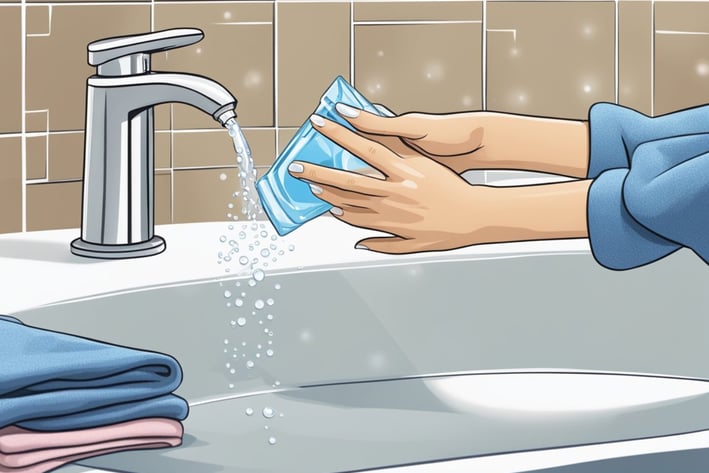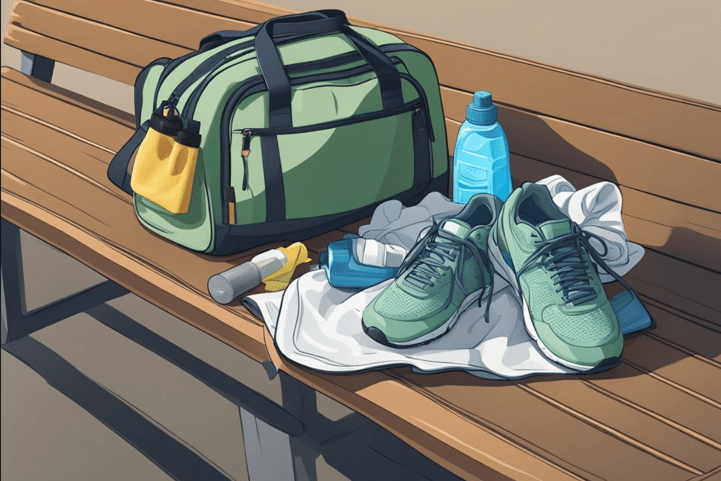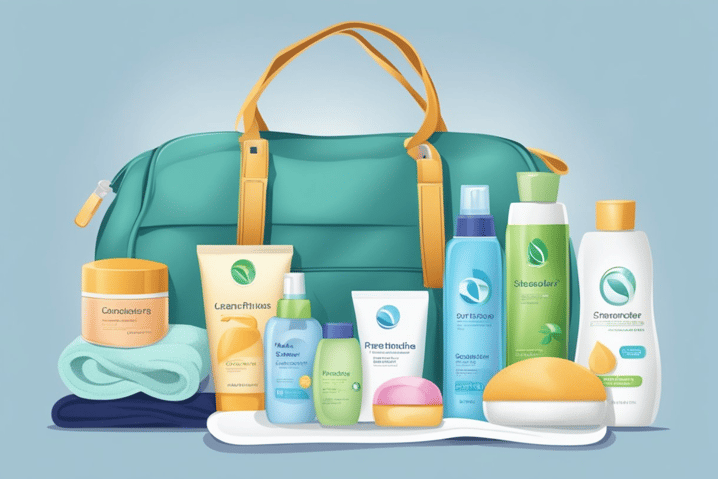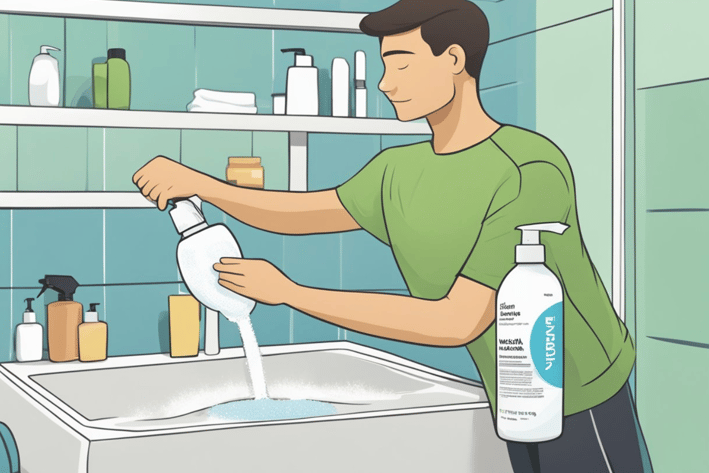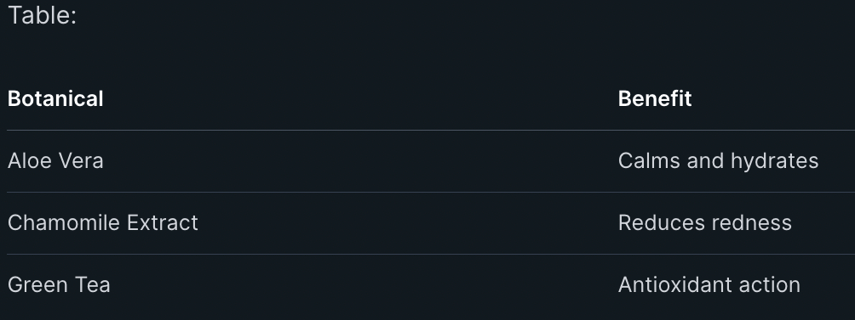
Best Cleansers for Clearing Sweat and Dirt Post-Workout
Sweaty workouts can leave your skin feeling sticky, clogged, and irritated but the right cleanser can change everything. In this guide, discover the best post-workout cleansers for clearing sweat, dirt, and excess oil without stripping your skin’s natural moisture barrier. From salicylic acid formulas that fight breakouts to soothing botanicals that calm redness, we cover top ingredients, types of cleansers, and expert tips for keeping your skin fresh, clear, and healthy after every session.
9 min read
Best Cleansers for Clearing Sweat and Dirt Post-Workout: Top Picks for Fresh, Healthy Skin
Effective post-workout cleansers remove sweat, excess oil, and dirt, helping to prevent clogged pores and breakouts. After any intense exercise session, skin can feel sticky or grimy, making a good cleanser key to feeling refreshed and maintaining clear skin.
The best options are gentle yet effective, offering a thorough cleanse without stripping the skin’s natural moisture. This guide highlights top cleansers designed to meet the needs of active individuals.
Choosing the right product helps keep skin clean, reduces irritation, and supports a healthy complexion after every workout.
Why Post-Workout Cleansing Matters
After exercise, skin is exposed to sweat, oil, and debris that can linger on the surface. Effective cleansing helps reduce the risk of irritation, clogged pores, and supports skin’s natural recovery process.
Preventing Breakouts Caused by Sweat
Sweat mixes with sebum and dead skin cells during workouts, creating an environment where bacteria can thrive. Without proper cleansing, this buildup may clog pores and encourage acne, especially on the face, chest, and back. People prone to breakouts often notice an increase in blemishes when they skip post-exercise cleansing.
Choosing a gentle yet effective cleanser removes sweat and impurities without stripping the skin of essential moisture. Look for formulas with ingredients like salicylic acid or tea tree oil for extra help in managing acne. Clean towels and showering as soon as possible further minimize risk.
A consistent cleansing routine helps keep pores clear and reduces the chances of post-workout flare-ups, keeping skin looking and feeling healthier.
Removing Environmental Pollutants
Workouts done outdoors or in urban areas often expose skin to higher levels of environmental pollutants. These include fine particles, dust, smoke, and even residual sunscreen that can accumulate on the skin. For individuals who exercise outside, prompt cleansing removes these contaminants before they can be absorbed.
Pollutants may weaken the skin barrier and contribute to premature aging and sensitivity. Many cleansers are formulated to specifically lift away these particles without causing irritation. Double cleansing, beginning with an oil-based cleanser followed by a water-based one, is an effective strategy for removing stubborn pollutants and residues.
Thorough removal of contaminants supports skin in staying resilient and reduces the impact of environmental stress.
Supporting Skin Recovery
Post-workout, skin needs to return to its natural balance. When sweat evaporates, it leaves behind salts that can cause dryness or irritation. Cleansing helps restore comfort by removing sweat residue and minimizing inflammation from friction or rubbing of clothing.
Some cleansers contain antioxidants or soothing ingredients like aloe or chamomile to help calm redness and support the skin's repair process. This is especially important for sensitive skin or those experiencing frequent shaving or chafing from workout gear.
A good cleansing routine enhances skin’s ability to recover, maintain moisture levels, and defend against future irritation.
Top Cleansing Ingredients for Post-Workout Skin
Not all cleansers remove sweat and dirt effectively without causing irritation. The most effective formulas combine ingredients that address congestion, maintain skin comfort, and prevent excessive drying.
Salicylic Acid for Unclogging Pores
Salicylic acid is a beta hydroxy acid (BHA) well-known for its oil-soluble properties. It penetrates pores deeply to help dissolve excess sebum, dead skin cells, and impurities that accumulate from exercise. This helps reduce the risk of post-workout breakouts, especially for those prone to acne or blackheads.
A typical concentration of salicylic acid in cleansers ranges from 0.5% to 2%. For most skin types, this range effectively unclogs pores without significant irritation. Salicylic acid also has mild anti-inflammatory properties, which can help soothe redness after sweating. Consistent but not excessive use supports clearer skin without disrupting the skin barrier.
Gentle Sulfate-Free Surfactants
Traditional sulfates, like sodium lauryl sulfate (SLS), can strip the skin of essential moisture and increase irritation after workouts. Instead, sulfate-free surfactants such as coco-glucoside, decyl glucoside, or sodium cocoyl isethionate provide effective cleansing with less risk of dryness.
These ingredients lift dirt, sweat, and sunscreen from the skin’s surface without a harsh, squeaky-clean feel. Their milder action is especially suitable for sensitive or compromised skin post-exercise. Dermatologists often recommend choosing cleansers with mild, sulfate-free surfactants for daily athletes or anyone washing multiple times a day.
Soothing Botanicals for Irritated Skin
Exercise and sweat can leave skin red or aggravated, especially for those with sensitive or reactive types. Cleansers containing botanicals like aloe vera, chamomile extract, or green tea help reduce visible irritation. These ingredients provide light hydration and calming effects as part of the cleansing process.
Fragrance-free botanical cleansers are often preferred to avoid additional sensitivity, especially immediately after sweating. The addition of soothing botanicals can make the cleansing step more comfortable and reduce the chance of post-cleanse tightness or flare-ups.
Types of Cleansers for Sweaty Skin
Different cleanser formulations serve distinct needs depending on how much sweat and dirt needs to be removed, as well as the user's skin type and preferences. Each product type works best for specific situations, ranging from thorough washing to quick, on-the-go refreshes.
Gel Cleansers for Deep Cleaning
Gel cleansers are especially effective after intense workouts. Their light, non-greasy formula helps remove sweat, sebum, and any lingering sunscreen or grime. Most gel cleansers contain gentle surfactants that lift dirt from pores.
For those prone to breakouts, gel cleansers with ingredients like salicylic acid or tea tree oil can help unclog pores and reduce the risk of post-workout acne. Users generally find that gels rinse off easily, leaving the skin feeling clean but not stripped.
It's important to check the label for added alcohol or strong fragrances, as these can cause irritation if used daily. Most experts suggest applying gel cleansers to damp skin, massaging thoroughly, and rinsing with lukewarm water for best results.
Summary Table: Feature Detail Texture Lightweight gel Best for Normal, combo, oily skin Key Benefits Deep cleaning, unclogs pores Typical use After heavy sweating
Micellar Waters for Quick Refresh
Micellar water is a convenient option for those who want to cleanse quickly, especially when access to a sink is limited. The formula contains micelles—tiny cleansing molecules that attract and lift away dirt, sweat, and oil from the skin’s surface.
Many athletes or gym-goers use micellar water on a cotton pad as a no-rinse cleansing solution. It can remove light layers of SPF, excess oil, and general grime without causing dryness. This makes it ideal for sensitive or dry skin types that may react to frequent washing.
While micellar waters are gentle, they may not fully remove heavy makeup or stubborn waterproof sunscreen. They're best used for light cleansing or as a pre-cleanse before a more thorough face wash later in the day.
Quick Facts:
Best for fast, on-the-go cleansing
Often fragrance-free and non-irritating
No need to rinse with water
Foam Cleansers for Oily Skin
Foam cleansers are typically recommended for those with oily or very sweaty skin after exercise. They start as a cream, gel, or liquid and turn into a rich foam when lathered up with water.
These products often feature surfactants that help sweep away excess oils and sweat. Some foam cleansers include charcoal, clay, or astringent extracts to further refine pores and control shine. They’re popular in humid climates or for those who wear sweat-resistant sunscreen.
However, not all foaming cleansers are harsh—many modern formulations offer mild cleansing without stripping protective oils. For best results, foam cleansers should be massaged gently onto the face and rinsed well to avoid residue.
Benefits:
Reduces excess oil and shine
Provides a fresh, clean feeling post-exercise
Usually best for oily or acne-prone skin
Cream Cleansers for Sensitive Types
Cream cleansers work well for sensitive, dry, or irritated skin that struggles with frequent sweat and wash cycles. Their thicker, emollient-rich texture helps maintain the skin’s natural moisture barrier while gently dissolving sweat and debris.
These cleansers usually contain soothing agents like ceramides, aloe vera, or fatty acids to help calm redness and prevent over-drying. Cream-based options are less likely to cause tightness after cleansing, making them suitable for individuals prone to eczema or post-shave sensitivity.
It’s best to avoid cream cleansers with added fragrance if sensitivity or allergies are a concern. Users should apply with fingertips, massage onto dry or damp skin, then rinse with lukewarm water or remove with a soft cloth.
Key Points:
Best for dry, sensitive, or mature skin
Maintains skin hydration and comfort
Gentle cleansing action, suitable for daily use
How to Choose the Best Cleanser After a Workout
Selecting the right post-workout cleanser means paying attention to skin type, ingredient labels, and how products interact with sweat and oil. Focusing on formulas that clean without stripping the skin is crucial.
Matching Cleanser to Skin Type
Different skin types require different cleansers. Individuals with oily or acne-prone skin benefit from gel-based or foaming cleansers that remove excess sebum and prevent clogged pores. Those with dry or sensitive skin should opt for cream or lotion-based cleansers, which help retain moisture while dissolving sweat and grime.
Combination skin may need a balanced formula that cleanses without over-drying. Reading product labels for descriptors like “hydrating,” “balancing,” or “oil control” can guide the selection. For sensitive skin, fragrance-free and hypoallergenic options reduce the risk of irritation. Testing a new cleanser on a small area first helps identify any adverse reactions.
Skin Type Recommended Cleanser Key Features Oily/Acne-Prone Gel or Foaming Oil control, deep cleansing Dry/Sensitive Cream or Lotion Moisturizing, gentle, soothing Combination Balancing/Formulated Cleanses, non-drying, hydrating
Avoiding Harsh Additives
Post-workout skin is vulnerable and prone to irritation. Cleansers with strong sulfates, parabens, or artificial fragrances can aggravate redness or dryness, especially when used right after sweating. Choosing sulfate-free and dye-free cleansers helps minimize this risk and preserves the skin’s natural barrier.
It’s important to check for alcohol or astringents that can further dry out the skin after washing away sweat. Instead, look for simple ingredient lists and products marketed as gentle or dermatologist-tested. Mild surfactants, such as coco-glucoside or decyl glucoside, cleanse effectively without causing harsh side effects.
Prioritizing Non-Comedogenic Formulas
Sweat from exercising can lead to clogged pores if not cleaned properly. Using a non-comedogenic cleanser prevents new breakouts by ensuring that the product doesn’t block pores. Ingredients like glycerin, hyaluronic acid, and aloe vera hydrate the skin while keeping pores clear.
Cleansers labeled non-comedogenic have been tested to reduce the risk of acne flare-ups. Avoid thick, oily cleansers or those containing ingredients like coconut oil or lanolin, which can trap dirt and sweat. Checking the packaging for the non-comedogenic claim helps users make a clear, informed choice.
Post-Cleansing Skincare Tips for Active Lifestyles
Maintaining skin health after exercise involves more than just removing sweat and dirt. Each step, from moisturizing to sunscreen application, plays a key role in preserving the skin’s barrier and preventing irritation.
Proper Moisturization After Cleansing
Cleansing can strip away not only dirt, but also natural oils that keep skin hydrated. This is especially important for those who wash their face more than once daily due to workouts. Immediately after cleansing, applying a gentle, fragrance-free moisturizer helps restore hydration and protect the skin’s barrier.
Look for moisturizers with ingredients such as hyaluronic acid, ceramides, or glycerin to attract and lock in moisture. For those with oily or acne-prone skin, lightweight gel-based formulas are less likely to clog pores. Applying moisturizer while skin is still slightly damp can help maximize absorption and leave skin feeling comfortable.
A simple routine after washing can be effective:
Pat skin dry gently with a clean towel.
Apply a suitable moisturizer within one minute.
Avoid heavy or occlusive creams after sweating.
Using SPF to Protect Freshly Cleaned Skin
Freshly cleansed skin is often more sensitive to UV exposure, making sun protection essential, regardless of season or indoor versus outdoor activity. Using a broad-spectrum SPF 30 or higher helps shield against both UVA and UVB rays, which can damage and prematurely age the skin.
It is important to choose formulas labeled non-comedogenic to avoid breakouts, particularly after intense exercise when pores are more open. For convenience, lightweight gel or fluid sunscreens absorb quickly and don’t feel heavy, making them ideal for daily use.
Key SPF application tips:
Apply sunscreen as the last step after moisturizing.
Use 1/4 teaspoon for the face and neck.
Reapply every 2 hours if exposed to sun, or after heavy sweating.
Timing and Frequency of Cleansing
Cleansing should be timed to remove sweat and dirt soon after exercise ends. Delaying can lead to clogged pores and increased risk of irritation or breakouts. However, over-cleansing—more than twice daily—can disrupt the skin barrier, leading to dryness and sensitivity.
Ideally, skin should be cleansed: Activity When to Cleanse After Workouts Immediately after Morning Optional Night Before bed
Use a mild, sulfate-free cleanser each time to prevent over-drying. It’s not necessary to double-cleanse unless excess sunscreen or makeup is present. Choose the frequency based on individual activity levels, but avoid washing too frequently.
